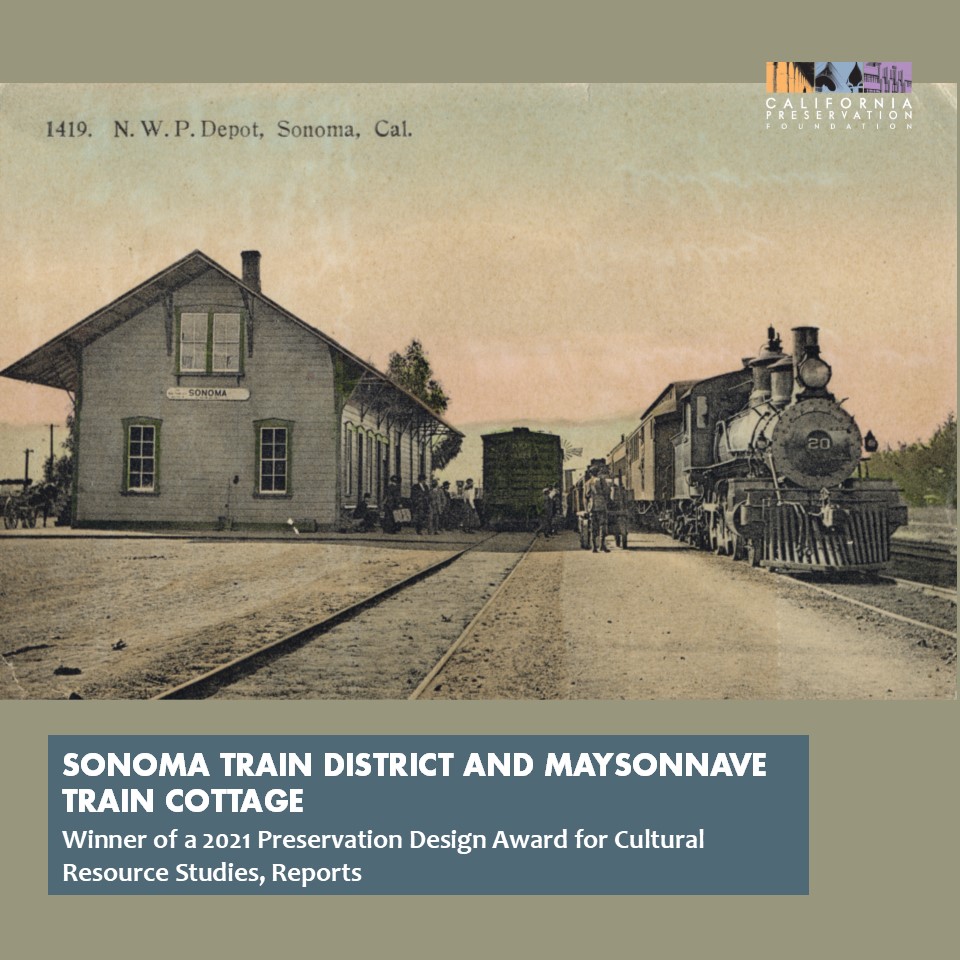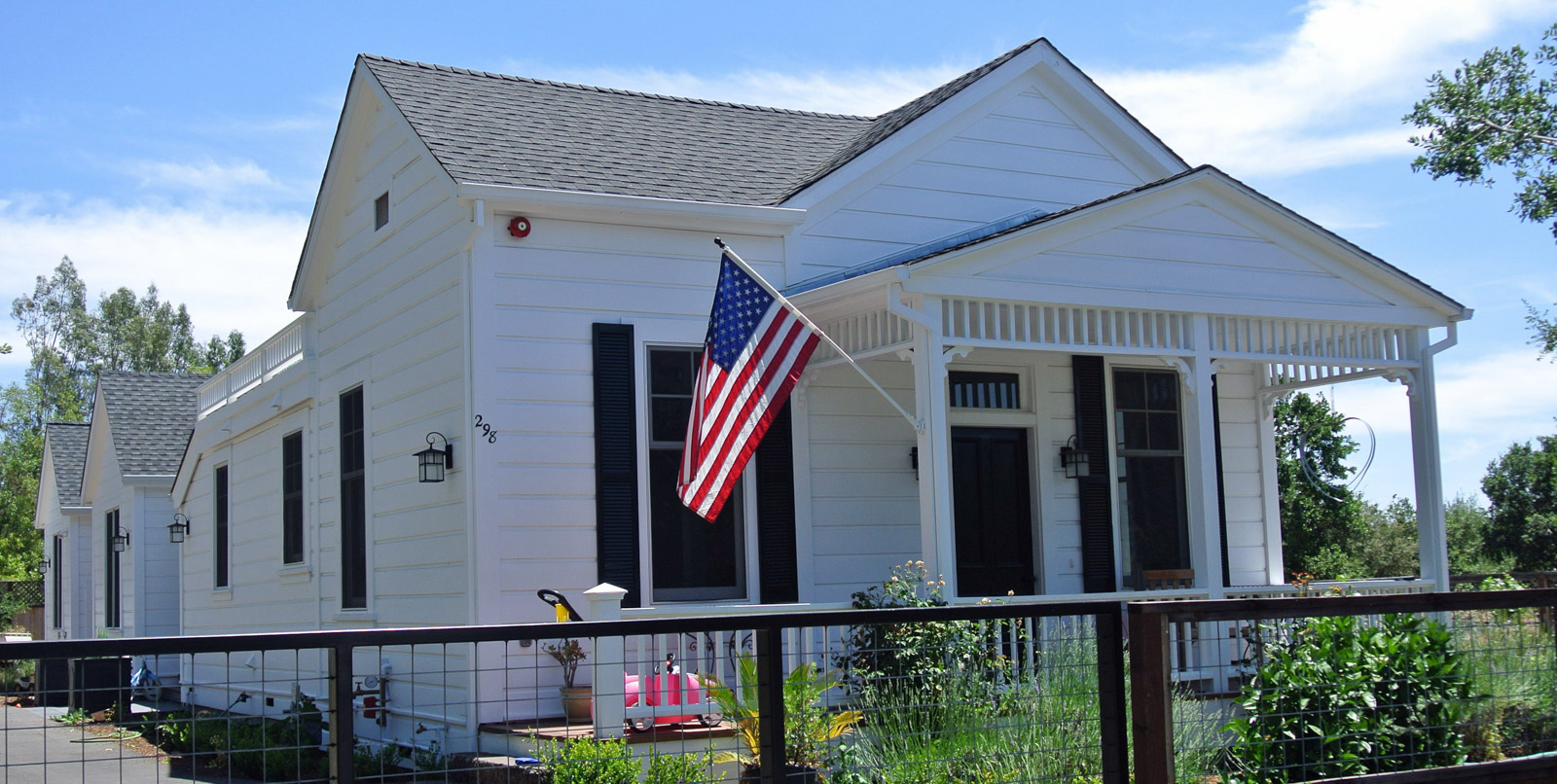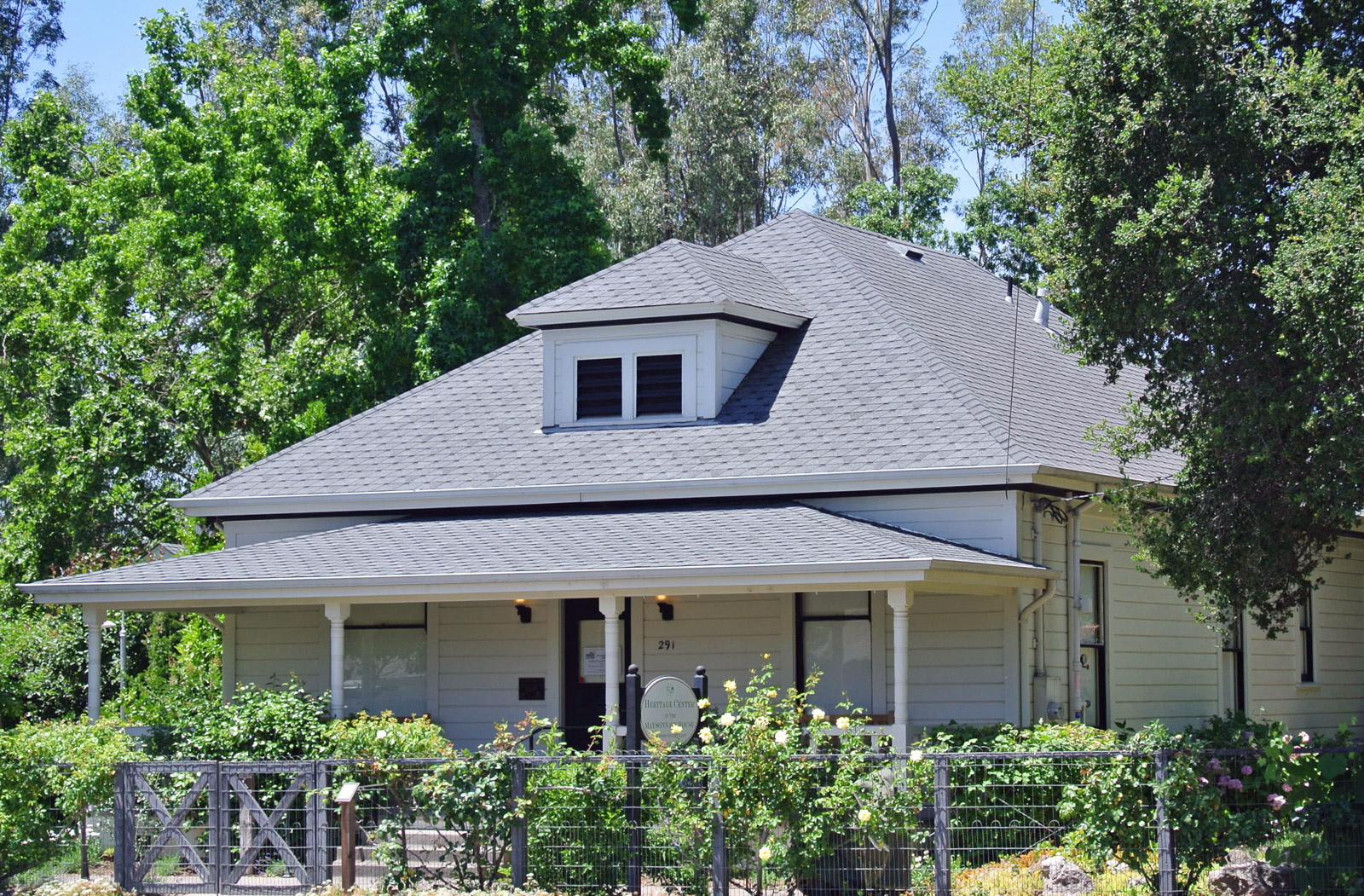About CPF and the Awards
The California Preservation Awards are a statewide hallmark, showcasing the best in historic preservation. The awards ceremony includes the presentation of the Preservation Design Awards and the President’s Awards, bringing together hundreds of people each year to share and celebrate excellence in preservation.
The California Preservation Foundation (CPF), a 501c3 nonprofit, was incorporated in 1978. We now support a national network of more than 36,000 members and supporters. Click here to learn how you can become a member.
Train District Project Team
Owner/Client
Rachel Hundley – City of Sonoma (Planning Department)
Author
Jerri Holan – Jerri Holan & Associates
Historic Architect
Jerri Holan – Jerri Holan & Associates
Historic Preservation Consultant
Jerri Holan – Jerri Holan & Associates
Sponsoring Organization
Patricia Cullinan – Sonoma Valley Historical Society
Sonoma Train District and Maysonnave Train Cottage
Sonoma Train District and Maysonnave Train Cottage is a winner for the 2021 Preservation Design Award for Cultural Resource Studies, Reports. Award recipients are selected by a jury of top professionals in the fields of architecture, engineering, planning, and history, as well as renowned architecture critics and journalists. Tickets and sponsorship options are available at californiapreservation.org/awards.
About Sonoma Train District and Maysonnave Train Cottage
Researching the historic context of the Maysonnave Cottage (slated for demolition by the City of Sonoma), an architectural historian discovered an intact Victorian neighborhood and Train Depot, concluding that the buildings contributed to a previously unidentified historic “Train District.” A 2008 Report, using the context of ‘Residential Architecture, 1835-1950,’ determined the Cottage was insignificant under California Register’s Criteria. Concerned citizens requested a re-evaluation. The later 2016 historic Report determined the Cottage was eligible for the National Register as was its surrounding neighborhood and train depot. These Victorian folk buildings were typical of rural American frontier towns and possessed a high level of integrity. The 2016 Evaluation successfully used the more precise context of “Rural Victorian Railroad and Residential Development, 1879-1942,” to demonstrate significance. The revised report also found that 80% of the Victorian buildings around the Depot were intact and determined the “Train District” eligible for the National Register under the same Criteria.






